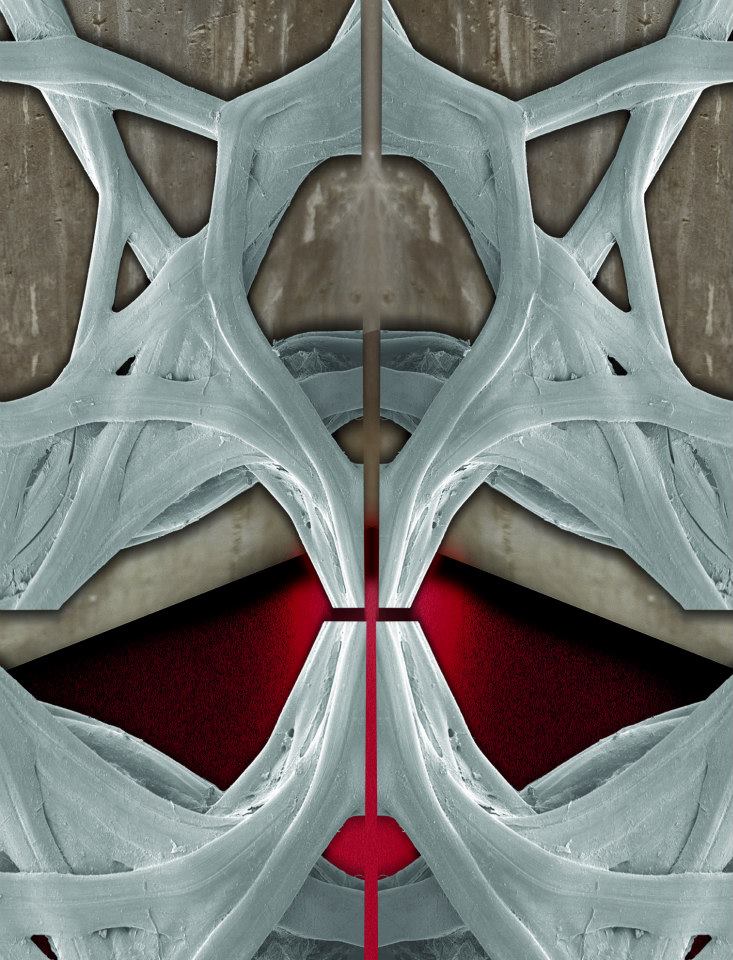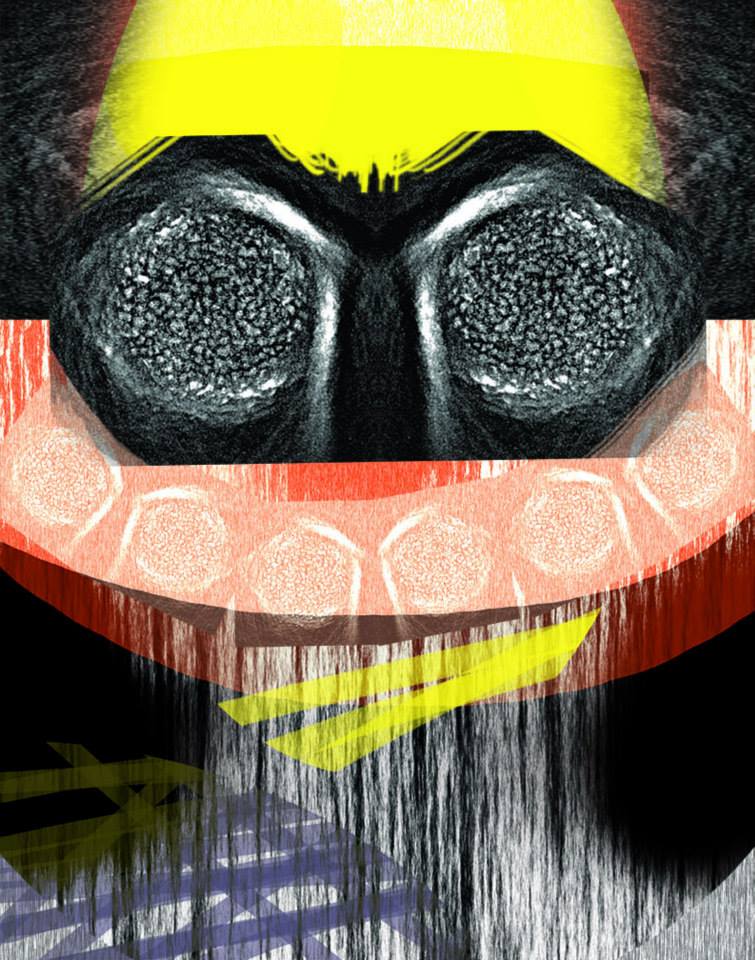Let it Sink In
Scientist Collaborator
Becky Slattery
Don Ort Lab
Instrument
Zeiss Lightsheet Z.1 Microscope
Funding Agency
Research funded by the United States Department of Agriculture
Original Imaging



Special Thanks
The Labrynth
Scientist Collaborator
Mark Band
Functional Genomics Unit
Roy J. Carver Biotechnology Center
Instrument
Zeiss LSM 710 Confocal Microscope
Funding Agency
Research funded by the Roy J. Carver Biotechnology Center and the Office of Vice Chancellor of Research at the University of Illinois
Original Imaging



Special Thanks
Small but mighty
Scientist Collaborator
Jim Collins
Phil Newmark
Phil Newmark Lab
Instrument
Zeiss LSM 710 Confocal Microscope
Funding Agency
Research funded by the National Institute Health and the Howard Hughes Medical Institute
Original Imaging



Special Thanks
Border protection
Scientist Collaborator
Mayandi Sivaguru
Anatoli Lygin
Dean Riechers
Dean Riechers Lab
Instrument
Multiphoton Confocal Microscope Zeiss 710 with Mai Tai eHP Ti:sapphire laser
Funding Agency
Research funded by the University of Illinois Campus Research Board and the Cooperative State Research, Education, and Extension Service
Original Imaging



Special Thanks
Straining Sinew
Scientist Collaborator
Mayandi Sivaguru
Core Facilities
Instrument
Nanozoomer Slide Scanner
Funding Agency
Research funded by the American Quarter Horse Association
Original Imaging



Special Thanks
Infiltration
Scientist Collaborator
Yanrong Lu
Qian Yin
Nan Zheng
Jianjun Cheng Lab
Instrument
Zeiss Elyra S1SIM
Funding Agency
Research funded by the National Institutes of Health
Original Imaging



Special Thanks
With a light touch
Scientist Collaborator
Mayandi Sivaguru
Core Facilities
Instrument
Veritas Laser Capture Microdissection (LCM) and Laser Cutting System
Funding Agency
Research funded by the Unites States Department of Agricultural
Original Imaging



Special Thanks
Turned on its axis
Scientist Collaborator
Momal Sharif
David Miller Lab
Instrument
SR-SIM Four laser structured illumination system; Imaris 3D visualization package
Funding Agency
Research funded by the COMSATS Institute of Information and Technology, Islamabad, Pakistan
Original Imaging



Special Thanks
Fire at Will
Scientist Collaborator
Aaron Johnson
Aaron Johnson Lab
Instrument
SR-SIM Four laser structured Illumination system
Funding Agency
Research funded by the University of Illinois
Original Imaging



Special Thanks
Web of thought
Scientist Collaborator
Maminirina Randrianandrasana
May Berenbaum Lab
Instrument
SR-SIM Four laser structured Illumination system
Funding Agency
Environmental scanning electron microscope with a field-emission electron gun
Original Imaging



Special Thanks
Sweetness alight
Scientist Collaborator
Claudia Lutz
Charley Nye
Gene Robinson Lab
Instrument
Canon EOS 5D Mark II
Funding Agency
Research funded by the National Institutes of Health
Original Imaging



Special Thanks
Living rock
Scientist Collaborator
Eva De Boever
Mayandi Sivaguru
Bruce Fouke Lab
Instrument
Multiphoton Confocal Microscope Zeiss 710 with Mai Tai eHP Ti:sapphire laser
Funding Agency
Research funded by the TOTAL E&P Oil Company Recherche Développement
Original Imaging



Special Thanks
Cellular silhouettes
Scientist Collaborator
Vladimir Kolossov
Rex Gaskins
Rex Gaskins Lab
Instrument
Zeiss ELYRA superresolution microscope
Funding Agency
Research funded by the National Institutes of Health
Original Imaging



Special Thanks
A cell changes its spots
Scientist Collaborator
Jingyi Fei
Taekjip Ha Lab
Instrument
SR-SIM - Four laser structured illumination system
Funding Agency
Research funded by the National Science Foundation and the American Cancer Society
Original Imaging



Special Thanks
Face of history
Scientist Collaborator
Cassandra J. Wesseln
Surangi Punyasena Lab
Instrument
SR-SIM - Four laser structured illumination system
Funding Agency
Research funded by the National Science Foundation
Original Imaging



Special Thanks
Springs Eternal
Scientist Collaborator
Maria Alejandra Bautista
Rachel Whitaker Lab
Instrument
Philips CM200 transmission electron microscope
Funding Agency
Research funded by the National Science Foundation
Original Imaging



Special Thanks
Girl Power
Scientist Collaborator
Pollen Power! campers
Andrew Leakey
Core Facilities
Instrument
Nanozoomer Slide Scanner
Funding Agency
Research funded by the National Science Foundation
Original Imaging



Special Thanks
Echoes of soundness
Scientist Collaborator
Qian Cheng
Bruce Schatz Lab
Instrument
Analyze - 3D Visualization and analysis software
Funding Agency
Research funded by the United States Department of Agriculture
Original Imaging



Special Thanks
Moving picture
Scientist Collaborator
Xinshuai Zhang
John Gerlt Lab
Instrument
Agilent 600 Mhz NMR
Funding Agency
Research funded by the National Institutes of Health
Original Imaging



Special Thanks
Know your enemy
Scientist Collaborator
Jim Collins
Phil Newmark
Phil Newmark Lab
Instrument
Various instrumentation
Funding Agency
Research funded by the National Institutes of Health
and the Howard Hughes Medical Institute
Original Imaging



Special Thanks
The Underwater World of Curaçao
Scientist Collaborator
Colleen Cook
Bruce Fouke Lab
Instrument
GoPro Video Camera
Funding Agency
Research funded by the Fouke Lab Group, the Illinois Department of Geology, the Roscoe Jackson
Award for Research Travels, and the Illinois Graduate College Master’s Travel Grant
Original Imaging



Special Thanks






























